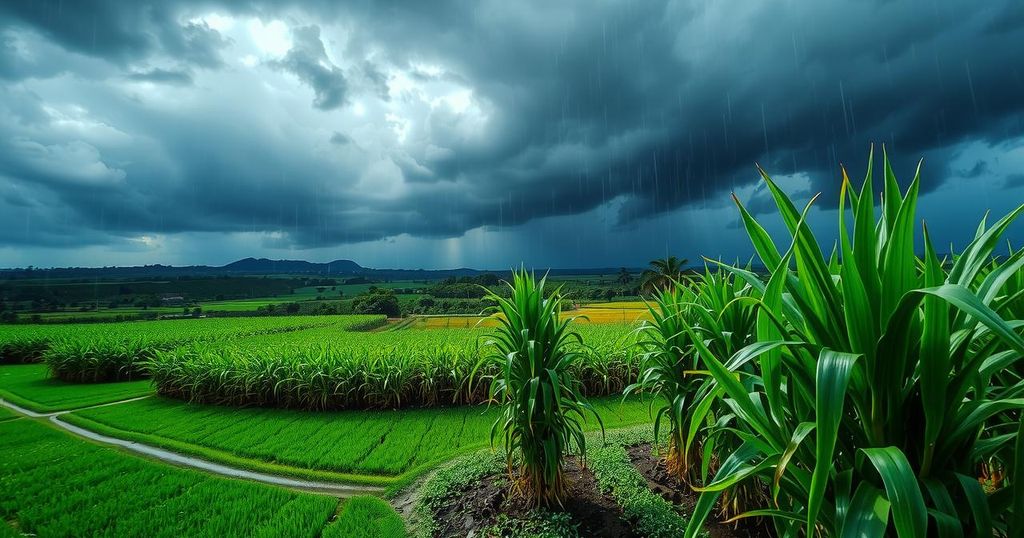Brazil Rain Forecasts and Real Weakness Drive Down Sugar Prices

Sugar prices have fallen to two-week lows due to anticipated rains in Brazil and a weaker Brazilian real, which promotes exports. Following previous price increases linked to production concerns, projections now indicate reduced sugar outputs in both Brazil and India, alongside increased global consumption. The implications of these factors present a complex landscape for the sugar market moving forward.
Sugar prices have reached two-week lows, with May NY world sugar 11 (SBK25) down by 0.15 to 0.79%, and May London ICE white sugar 5 (SWK25) down by 1.90 to 0.35%. This decline is attributed to favorable rain forecasts for Brazil’s sugar-growing regions, alleviating dryness concerns. Meteorologist Climatempo has predicted widespread showers that may continue into next week, contributing to this price drop.
Additionally, the strengthening of the Brazilian real (^USDBRL), which has depreciated to a two-week low, is impacting sugar prices negatively. A weaker real incentivizes Brazilian sugar producers to increase export sales, further pressuring domestic sugar prices. In contrast, sugar prices had earlier surged, with NY sugar hitting a one-month high and London sugar reaching a four-month high due to concerns over declining global sugar production.
Recent reports indicated a reduction in sugar production forecasts, particularly from India and Brazil. The Indian Sugar and Bio-energy Manufacturers Association has lowered its 2024/25 sugar output forecast to 26.4 million metric tons (MMT), indicating a decrease due to lower cane yields. Concurrently, Brazil’s Unica reported a 5.3% year-on-year decline in cumulative sugar output through mid-March, with projections for Brazil’s 2025/26 sugar production also being reduced.
The International Sugar Organization (ISO) raised its global sugar deficit forecast for 2024/25 to -4.88 MMT, contrasting sharply with a surplus anticipated in the previous crop year. This is compounded by the expectation of a substantial increase in sugar production in Thailand, which could further depress prices in the global market.
Moreover, the easing of sugar export restrictions by India could contribute to higher supply levels, with the Indian Sugar Mills Association projecting a significant decrease in production for the upcoming season. Additionally, the impact of climate conditions such as drought and excessive heat last year has been detrimental, especially in Brazil, where substantial losses of sugar cane have been reported.
Lastly, the USDA has forecasted a notable increase in global sugar production for 2024/25, expecting reaching a record 186.619 MMT. However, the forecast for global sugar consumption is also on the rise, indicating a tightening market despite increased production.
In conclusion, the decline in sugar prices is significantly influenced by favorable rain forecasts in Brazil and a weaker Brazilian real, promoting export sales. Recent projections suggest a reduced global sugar production due to adverse weather conditions while maintaining forecasts of increased consumption. The outlook remains complex as both domestic and international factors, including production adjustments in Brazil and India, play pivotal roles in shaping future sugar market trends.
Original Source: www.tradingview.com







